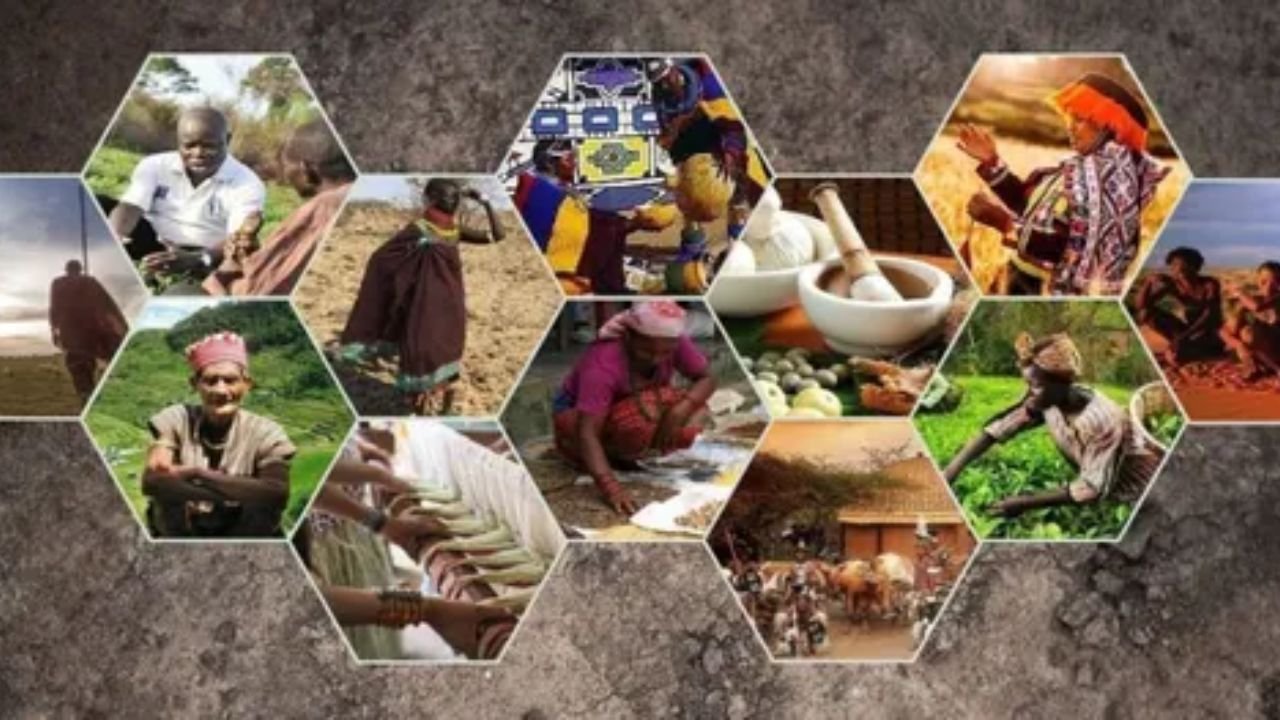When we talk about environmental conservation, everything high-tech and shiny usually comes to mind. Solar panels wind turbines, electric cars, all cool examples of modern innovation. But what if I told you that Indigenous peoples have practiced some of the most effective and sustainable environmental conservation methods for centuries? That’s right. Knowledge passed down through generations from Indigenous peoples has long been protecting and nurturing the environment, long before we even started thinking about recycling or carbon footprinting.
Swasya Living: Where Indigenous Wisdom Meets Sustainable Living
Swasya Living is a managed farmland dedicated to the practice of sustainable living and an orientation towards an eco-friendly lifestyle. It blends with the indigenous knowledge along with modern organic farming, creating a self-supportive and natural environment. The ethos of the farm is chemical-free cultivation, rainwater harvesting and biodiversity conservation. The residents and the guests enjoy wholesome living by consuming locally fresh food, using natural building techniques and using renewable energy practices. Swasya Living is not just a farm; it is an odyssey back to nature, where sustainability embraces traditions for a greener tomorrow.
Now let’s go into how environmental conservation is affected by Indigenous knowledge. Grab your eco-friendly coffee mug and let’s dive in!
A Different Relationship with Nature
Indigenous people have survived historically interconnected with the environment for thousands of years. They have a kind of virtue that does not lean on the exploitation or domination of the land but rather mutual respect and understanding. Unlike the modern tendency to see the natural world outside of human experience as something ‘out there’ to be controlled or used, Indigenous cultures view nature as an integral part of their community, often seeing themselves as stewards or caretakers of the land. It’s like having a roommate with whom you’d like to share a space. For the best part, you’ll want to keep the place clean and in harmony, right?
These relationships induce some of the practices of sustainable ways, which everyone could learn from. For example, many indigenous groups engage in controlled burns. This method is used to prevent wildfires. Controlled burns are a Native American tribes practice of small, controlled fires to remove underbrush, thus reducing the likelihood of much larger, uncontrolled wildfires. It’s like cleaning your room so that it doesn’t end up looking like a disaster zone and suddenly, you don’t have to deal with a massive mess that would take forever to fix.
Sustainable Agriculture and Food Systems
Ever heard of the Three Sisters? No, we’re not referring to any superhero trio, although they sure are super. The Three Sisters is an Indigenous farming technique practiced mainly by Native Americans that involves interplanting corn, beans, and squash. The three crops grow symbiotically: corn provides a pole for beans to climb; the beans enrich the soil with nitrogen; and squash serves as a weed-suppressing ground cover. It’s teamwork at work – they help one another grow.
A timeless outdoor activity is environmentally friendly, cutting down on the use of several chemical fertilizers and pesticides, increasing biodiversity and keeping soil healthy. Modern industrial agriculture, however is based mainly on monoculture, growing single crops in large areas, with a heavy reliance on synthetic fertilizers and pesticides, which ultimately harm natural ecosystems. The Three Sisters would be the opposite of working against nature; rather, it works with her.
Traditional Ecological Knowledge (TEK)
The term Traditional Ecological Knowledge (TEK) highlights the most valuable contribution that Indigenous peoples provide in the areas of environmental conservation. This signifies the information, practices and belief systems developed by the Indigenous community over centuries regarding their local ecosystems. This knowledge has been regarded as the understanding of the world through observation, experience and a deep connection to the land.
For instance, among the various ways in which Indigenous communities perceive the world, the people in the Arctic have been found to have much deeper and profound knowledge of sea ice patterns than others. They know when it is safe to travel on ice, when it can take a certain weight and when it might become too dangerous. This knowledge, taught orally, often by way of storytelling as well, helps them to move safely within their world. It’s almost like having one’s GPS – but with way more accurate information – and none to charge it!
In other respects, TEK has also been employed to detect wildlife populations, know behavior changes and predict the weather. This kind of knowledge could be proved invaluable, particularly in an age when climate change is rapidly changing one’s entire ecosystems around the world. TEK and modern science combine to create more comprehensive, effective and efficient conservation strategies.
Indigenous Land Management
The indigenous communities have been implementing several forms of land management that promote Species sustainability and biodiversity. They include: firestick farming used by Australian Aboriginals. The word firesticks whole indicates a type of vegetation clearing practice using controlled fire so that the exact amount of vegetation would be burned. This enables keeping healthy land with animal inhabitants as well as new plant growth, the renaturalization of native species and habitat development for animals. It’s spring-cleaning for the land, with fire acting as the natural tool for regeneration this time of year instead of harsh chemicals.
Similarly, across North America, indigenous groups are still prioritizing the sustainability of their hunting and fishing. They usually hunt only for what they need so that animal populations remain healthy and stable. The case of Cree Canadians illustrates that well; these people have excellent knowledge about the seasonal cycles of fish and game, which enables them to hunt and fish at appropriate times without depleting certain species through over-exploitation. It is like going to the supermarket and only buying what you can eat – no over-stocking or wasting food.
The Modern Intersection: Collaborating with Science
This makes one wonder. Now that’s good, but what can it accomplish in today’s age of high-tech conservation? Well, here’s the twist: the scientific community is beginning to recognize that indigenous knowledge is important and approaches are being made toward indigenous peoples to elevate present conservation methods. It would be like mixing an excellent chef with the knife skills of a superb sous chef, the final product can be magical!
For instance, it seems that scientists are fulfilling their end of the bargain regarding the use of indigenous knowledge in their continuing efforts to track and sustain biodiversity. In New Zealand, Māori knowledge of native plant species has been applied to the restoration of the country’s forests. There is a partnership between Indigenous communities in Canada and biologists to monitor wildlife populations and land management strategies toward sustainable development. This kind of link can join ancient wisdom and modern techniques and thus offer the best of both worlds.
Conclusion
Indigenous knowledge is not a relic filled with dust and completely outdated. It is a living tradition demonstrating sustainable living, having survived the test of time. Our environmental conservation strategies for a sustainable world will be improved by learning from Indigenous cultures and working together with them.
So next time you hear someone explaining a new trend in environmentalism, ask them to remember that sometimes the best solutions are the oldest ones. Maybe we will eventually all reach a point in consciousness when we will not only protect nature but also care for it, as those Indigenous cultures have been doing for centuries.
FAQs
- What is Indigenous Knowledge (IK)?
Indigenous Knowledge includes traditional wisdom, practices, and beliefs that were developed over many generations and are deeply connected with the land, plants, animals, and ecosystems. It helps focus on the sustainable management of resources and environmental stewardship. It is transferred orally by the communities or learned through observing the daily activities of the community.
- How does Indigenous Knowledge contribute to environmental conservation?
Indigenous knowledge promotes conservation by offering sustainable practices such as controlled burns, the Three Sisters farming technique and a much deeper understanding of local ecosystems that require a balance, sustainability and long-term stewardship of natural resources.
- Can Indigenous Knowledge be integrated with modern science?
Definitely! Large amounts of scientific collaboration with Indigenous tribes. This collection and integration of traditional ecological knowledge (TEK) into scientific methods can help to create effective conservation strategies that lead to better conservation outcomes both rigorous from a scientific viewpoint and culturally relevant.
- What is Traditional Ecological Knowledge (TEK)?
Traditional Ecological Knowledge (TEK) is a vein of Indigenous Knowledge; it concerns knowledge of the relations established between organisms and their Mother-Earth, regarding seasons, migration, growth of plants and the management of ecosystems, thereby contributing to a sustainability culture and the conservation of one’s culture.
- How can we support the preservation of Indigenous Knowledge?
Knowing that Indigenous knowledge preservation refers to enforced respect for Indigenous perspectives, creation of spaces for Indigenous voices in policy, cultural exchange implementations and collaboration to protect knowledge and rights for future generations.



